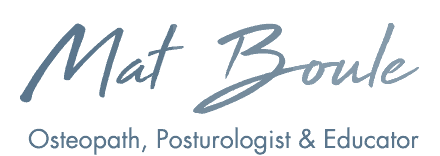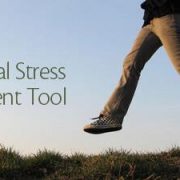It would be easy to think that, if we experience pain, it is because a tissue is suffering from a lesion. We can think of an injury, weak or tight muscles.
We now know that it’s not that simple, especially when pain becomes chronic. We speak of chronic pain when it’s been ongoing for more than 3-6 months.
If injuries hurt, it’s because they activate nociceptors. These are the receptors that respond to pain or excessive temperatures.
Recent studies allow us to understand that it’s possible to have pain while there is actually nothing wrong happening with the physical body.
Here are some examples that make you go hmmm:
– Researchers that have analyzed MRI’s of the spinal column of asymptomatic patients found that 80% of them had a disc protrusion or a hernia.
– Researchers have analyzed MRI’s of subjects that were asymptomatic and, in 34% of the cases, they presented with one or more than one tear of the rotator cuff muscles. When a population of individuals 60 years old and more were studied, this number was 60%.
– In the context of subjects presenting with arthrosis of the knee, it was found that 76% of them had lesions at the level of the menisci. They were asymptomatic.
Taking these facts into consideration, how is it that we are told that, to experience pain, something has to be broken?
Professor Lorimer Moseley, teacher of neurosciences and responsible for the department of physiotherapy at the University of South Australia, stipulates that pain is the sum of the environmental context. If it’s true that the pain signal is activated when we get hurt, it’s also true that our environment is a component of our perception of pain.
Professor Dr. Finn Bojen-Moller has even stated that it was fundamental that pain be felt before tissue is actually hurt. He actually sees pain as an alarm signal whose purpose is to maintain a certain level of integrity of the tissues of the organism.
The perspective illustrated is the perspective of practitioners that base their work exclusively on what is seemingly published in the literature. I don’t think that they are wrong. But I am not convinced they are absolutely right either.
What these professionals are saying is that the body can adapt to stress. It would be for that reason that there is no point in trying to reduce stress on the body by aligning it since it has a capacity to buffer it. Only thing is: adaptation does have its limits. Here is a recent study that states that the link between structural damage and pain: https://www.ncbi.nlm.nih.gov/pubmed/26359154.
With this in mind, we dispose of the technology and exercises to align the bony pieces of an individual without them having to think about it 24/7. It can be an interesting option to reduce constraints on joints, decrease muscle stiffness and allow for optimal performance.
MRI Findings of Disc Degeneration are More Prevalent in Adults with Low Back Pain than in Asymptomatic Controls: A Systematic Review and Meta-Analy… – PubMed – NCBI
AJNR Am J Neuroradiol. 2015 Dec;36(12):2394-9. doi: 10.3174/ajnr.A4498. Epub 2015 Sep 10. Meta-Analysis; Research Support, N.I.H., Extramural; Review




